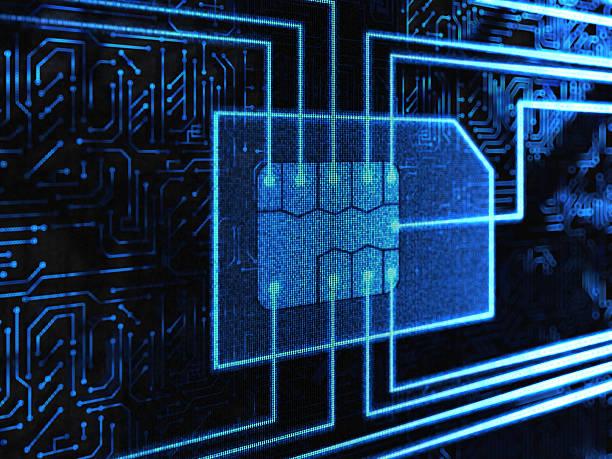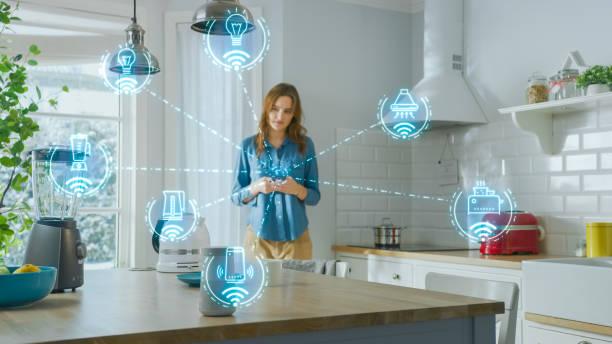IoT is fast phasing out GSM as it takes over cellular communication. Nowadays, most mobile device manufacturers and communications companies prefer IoT over GSM. Despite the changes, GSM remains critical for mobile and other communication devices. This has raised numerous questions about the potential of IoT against GSM and which one is better than the other.
IoT and GSM are critical components of cellular network connectivity utilized in communication devices. Both have certain interrelations, considering GSM is one of the most widely used network technologies to empower the Internet of Things.
Here are some fundamental relations and differences between the two.

What are GSM and IoT?
GSM refers to the global systems for mobile communications, which is one of the oldest cellular network standards. It has been the gold standard for most communication devices since the inception of 2G devices. It was key in facilitating the transition from first generation computer and mobile network to the second generation (2G), facilitating the analog to the digital revolution.
GSM has contributed to cellular technological inventions, such as conferencing, call waiting, caller ID, and SMS. However, even though GSM was more applicable for mobile devices, IoT is applicable for handling devices, laptops, computers, and other technical communication devices.
Since the advent of digital migration, different cellular network technologies are currently in operation, such as 3G, 4G, and today, we have 5G. The Internet of Things (IoT) played a significant role in migrating to 3G, but a better role was evident in the development of 4G and 5G. Despite the GSM being a game changer, the IoT currently controls the cellular network revolution.
IoT refers to wireless connectivity between different communication devices without the intervention of humans. It is the most prevalent technology in modern devices, such as smartphones, laptops, and other communication devices. It is also applicable in many touch systems, home systems, etc.
The critical differences between GSM and IoT
Considering numerous complexities involved, companies opt for the services of professional third-party agencies such as Monogoto to help implement IoT in every organizational aspect. This is due to the improved capabilities of IoT over GSM.
The critical differences between IoT and GSM are evident in the performance, capabilities, features, and user-friendliness.
Speed
Today, mobile devices have faster data access and transmission services. This is evident in the duration it takes to receive data and send and access different sites. Initially, making a call and sending or receiving a message took longer.
In the future, IoT promises the fastest data stream; currently, 4G has data speeds of about 200 Mb per second. Besides, 5G promises 2GB per second, which is 100 times faster than 4G. Traditionally, 2G was only offering 50KB per second.

Security
GSM has major technological drawbacks; hence hackers can quickly gain access to the systems. In contrast, IoT prioritizes security by boosting different security protocols and authentication factors to make the devices more secure. It facilitates biometrics, transaction, possession authentication methods, and security features, unlike GSM, which was mainly dominated by mobile pins and password use.
The use of sim cards
For GSM, connectivity, and communication revolve around the sim cards. To communicate, one must use a device with a sim card. However, the IoT diversified wireless technology to support communication facilitated by Wi-Fi and other connectivity protocols. Today one can communicate without necessarily having a sim card on the phone. You only need internet connectivity to the LAN, WAN, public, or private Wi-Fi networks.

Interference
GSM has different sources of electromagnetic interference; the interference is also extensive based on the device and the communication interference. However, wireless communication facilitated by the IoT has limited interference regardless of the range and the device used for communication.
Mass connectivity
By boosting frequencies, IoT increases the number of devices one can connect to the network. For instance, IoT can support the global connectivity of devices, a feature that GSM alone cannot.
Besides, GSM heavily relies on boosters to boost networks to increase connectivity and the number of devices. In contrast, IoT uses wireless technology and relies not heavily on boosters but on cloud-based systems such as satellite connectivity. This reduces the number of infrastructures needed by communications companies and the number of devices to connect. Eventually, they save more capital compared to the reliance on GSM.
IoT has also facilitated connectivity and communication between different devices. GSM limits the connectivity between devices, i.e., a phone and a computer. On the other hand, the IoT allows connectivity between a wide range of systems regardless of their functions, capabilities, and users. It can connect both static and devices in motion.
The integration of GSM and IoT
Despite IoT being more efficient and effective than GSM, there are numerous attempts to integrate the two for different reasons. GSM is a critical component of smartphones which are most IoT-enabled devices. The integration, referred to as the GSM IoT integration is vital in creating different technologies such as C-GSMK-IoT. This technology is applicable in low-power comprehensive area network device technologies.
The other integration is NB-IoT, the Narrowband Internet of Things, which refers to an upgrade of GSM. It uses GSM but boosts the power and capability of GSM to support different devices in motion. It can also support their signal strength and battery duration by lowering energy consumption.
Integrating these two cellular technologies has different benefits for consumers and manufacturers. First, the devices remain affordable while companies make more sales revenues. Selling fully IoT-powered devices could be more expensive and only acceptable amongst a smaller market segment.
Additionally, the integration improves the network range to allow the communication of IoT devices in different locations but connected on a similar network. It also conserves energy making it ideal for complying with energy regulation and sustainability standards.
Conclusion
IoT is better than GSM due to its range, speed, security, and connectivity capacity. It is critical for driving a new cellular network such as 5G, which promises the best connectivity and device functionality. However, engineers are currently combining the power of GSM and IoT to make GSM IoT integrated devices that are highly affordable and energy efficient.

